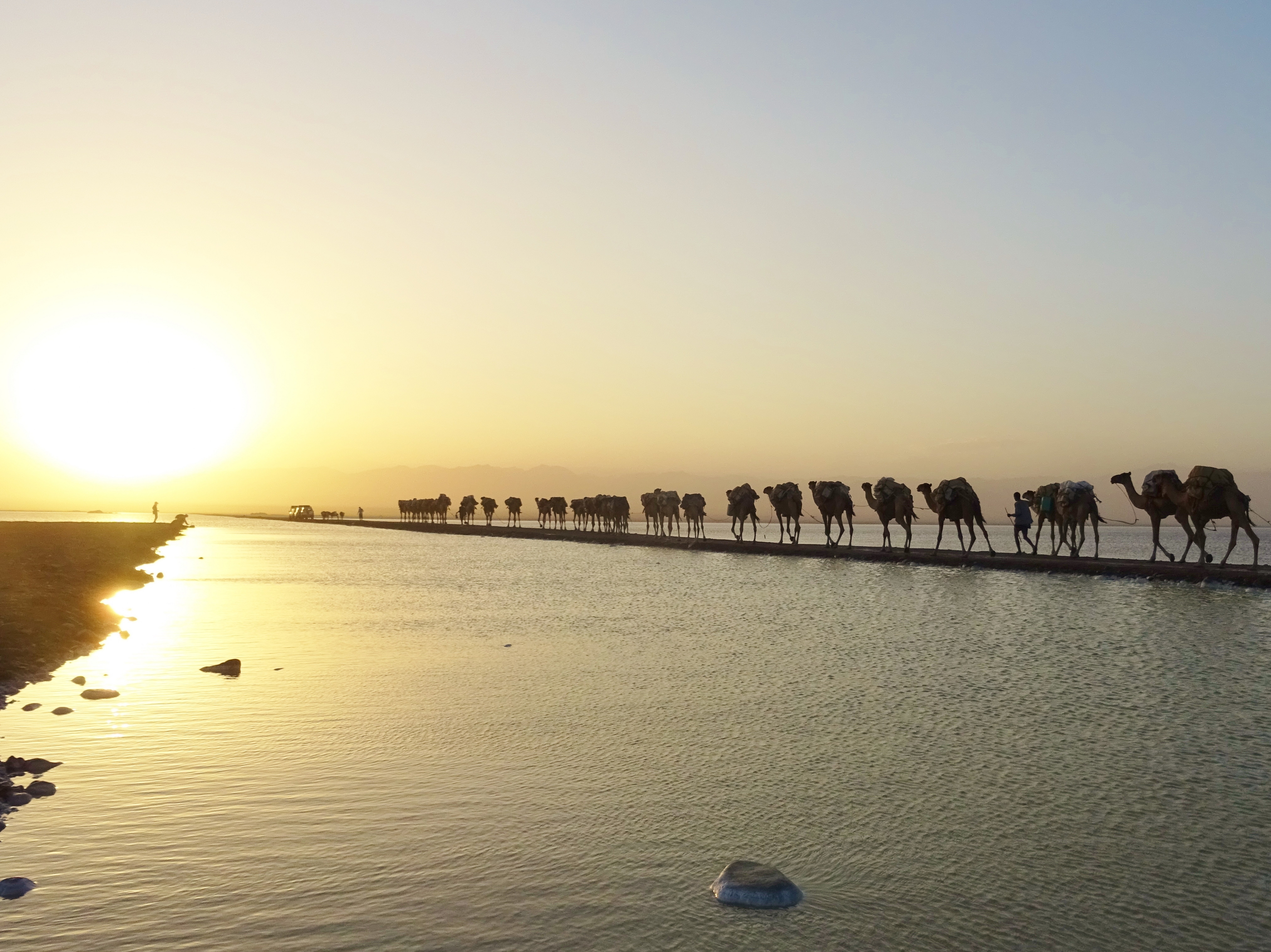The Salt Caravans of the Danakil Depression
A disappearing world

The Danakil Depression on the border between Ethiopia and Eritrea is one of the hottest places on earth. Temperatures can exceed 50 degrees centigrade, with the year-round average being 35 degrees. For most of the year, there is virtually no rain.
The Depression is also one of the lowest points on the planet, reaching 125 m below sea level. Located in the Danakil Desert that also extends to include parts of Djibouti, it contains a wealth of geological features that look straight out of a sci-fi movie – active volcanoes, steaming sulphur pools, salt flats and strange rock formations.
This unforgiving and hostile environment is home to a few members of the Afar tribe. Largely nomadic, the Afar are spread out across the region that bears their name and straddles the border of Ethiopia, Eritrea and Djibouti. They have a reputation for being fierce and suspicious of outsiders, reputedly castrating their enemies and keeping the detached genitalia as battle trophies. After five tourists were killed in 2012, the Ethiopian authorities insist on visitors being accompanied by soldiers.
Click on the photographs to enlarge and see the captions:
The Danakil Depression is also the setting for a centuries-old practice of camel caravans carrying salt across the Danakil Desert, a tradition that is under threat. Determined to see the iconic caravans and historic open-air salt mines before they vanish for ever, I decided to return to the Horn of Africa and visit this fascinating, if remote, part of the world.
Using methods that have not changed for centuries, the locals hand cut tablets of salt direct out of the ground. Caravans of camels and donkeys carry the tablets to market at Berahile, where it is sold to merchants, loaded on to trucks and taken to the city of Mekele. From here, it is distributed around Ethiopia.
Legend has it that the area was once full of gold. The people who used to live here became very wealthy and lazy, forgetting to worship their gods. The gods punished them by turning the gold into salt. When the people reform their ways, it is said, the deities will restore their gold to them.
Whatever their gods may think, the men and boys I saw mining the salt in the searing heat were working very hard indeed. Some were levering large slabs of salt out of the ground, while others cut and chiselled them into tablets about 30cm x 20cm. Everywhere, thin forms, their dark skin contrasting against brightly coloured clothes, laboured away, while camels and donkeys waited to be loaded with their burden. A tablet at the open air mine sells for just 4 Birr – less than 20 eurocents – a piece, the price rising at each stage of its journey. Making a living as a miner here means a lot of hard work.
The traditional caravans may soon be a thing of the past. A new metalled road has already made it easier to penetrate further into the desert with trucks and shortened the journey covered by the long trains of beasts of burden. The way of life of the Afar will probably change.
I had mixed feelings watching the slender figures toiling under the relentless African sun. I knew I was witnessing a part of human heritage which will soon disappear.
Yet what for the observer might be an interesting anthropological experience is for those sweating away here both their livelihood and damned hard work. Would the Afar regret the passing of the caravans into history, I wondered, if better opportunities became available?
Whatever the fate of the caravans and the miners, the Danakil Depression’s amazing geological features will no doubt endure. I consider myself very fortunate to have been able to witness both. Despite their reputation, all the locals we met were very friendly and, I am glad to say, I returned with all body parts intact.
RETURN
